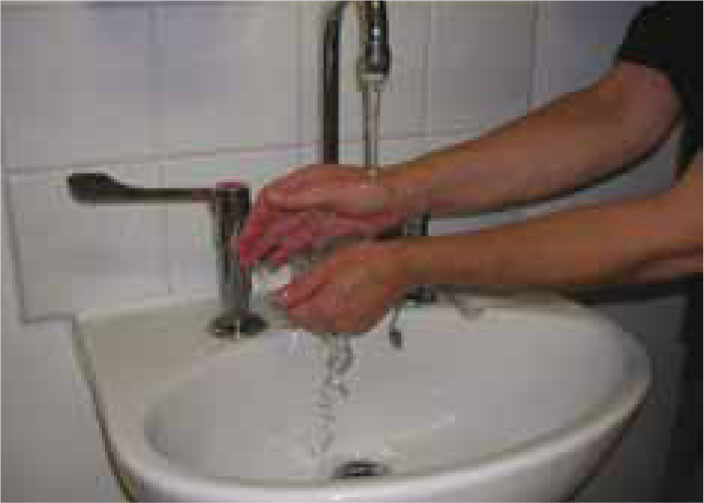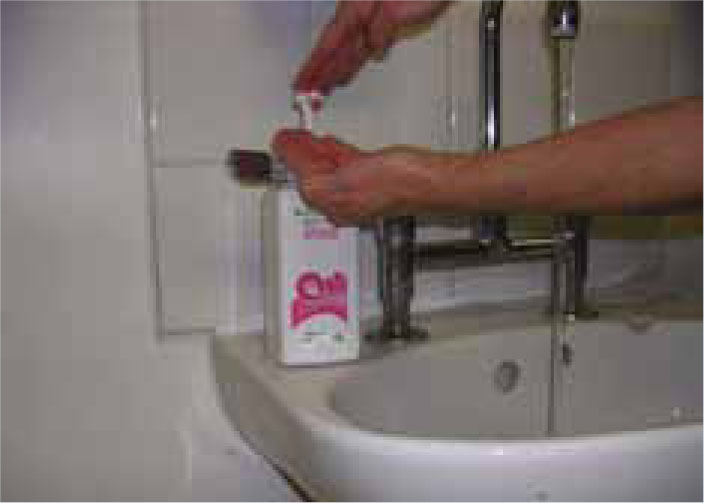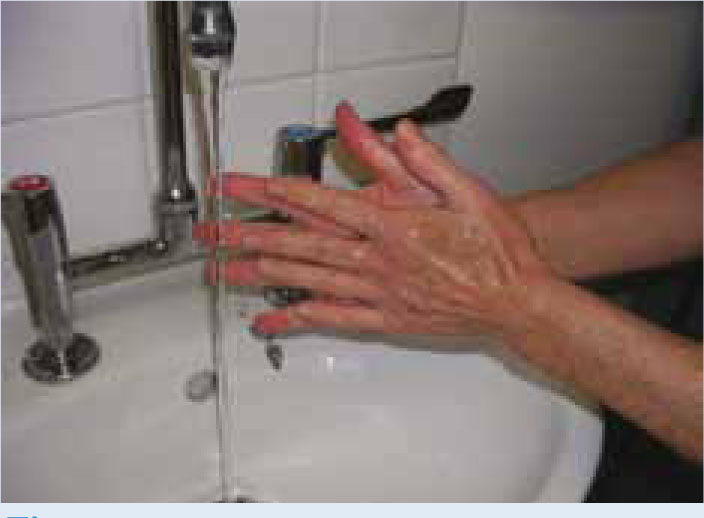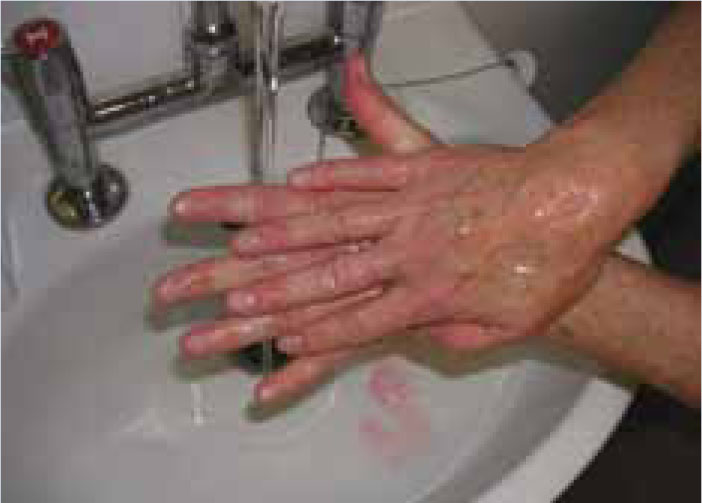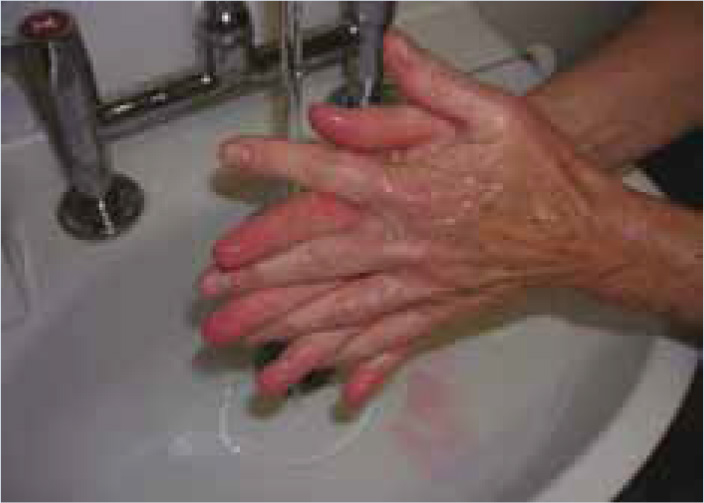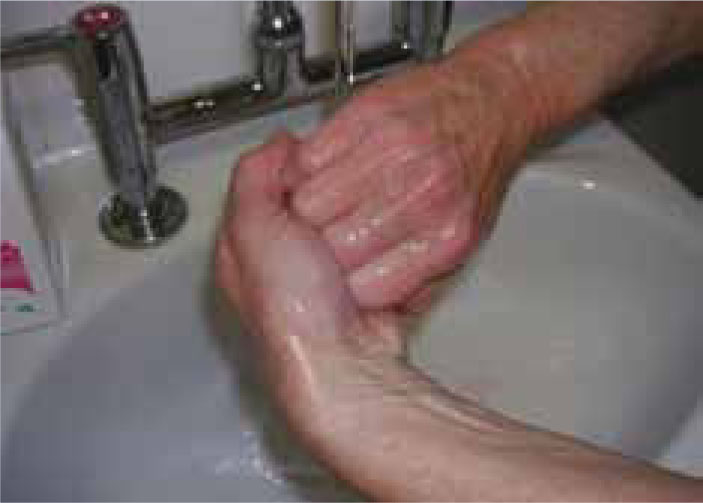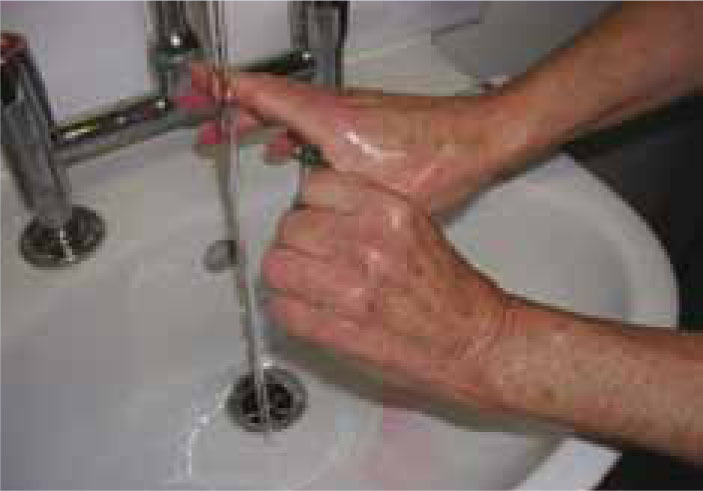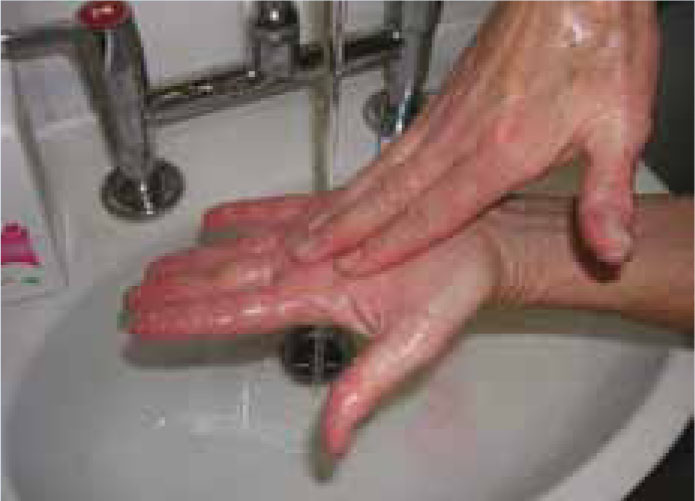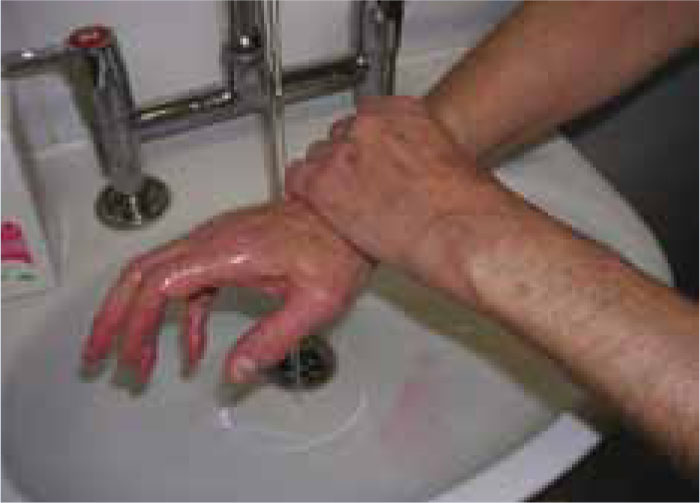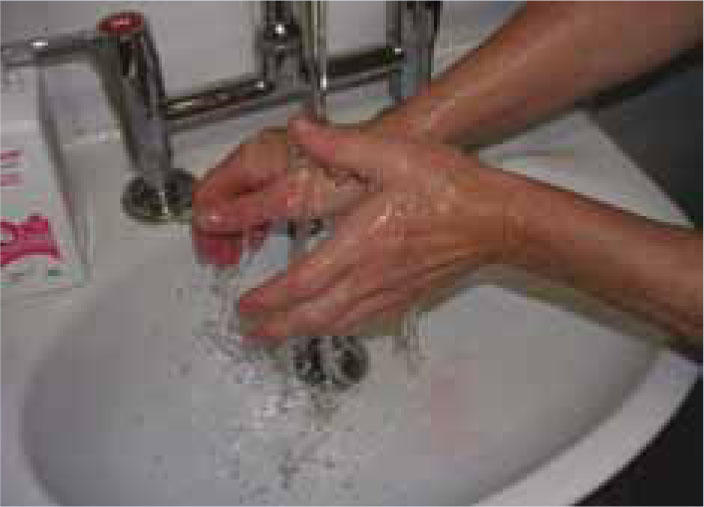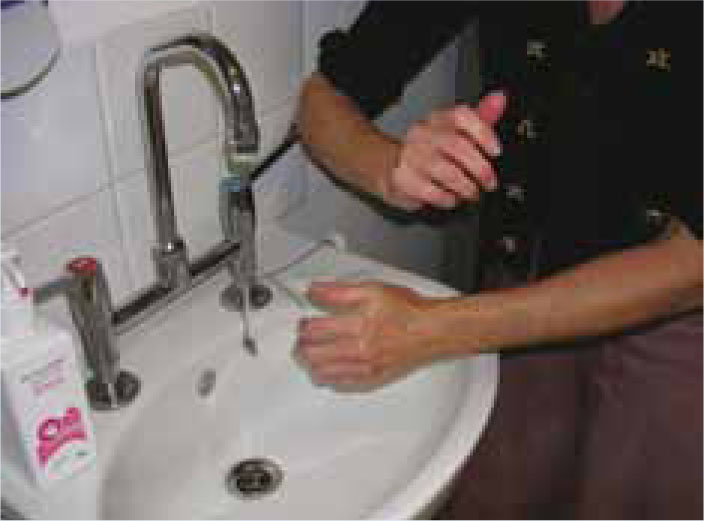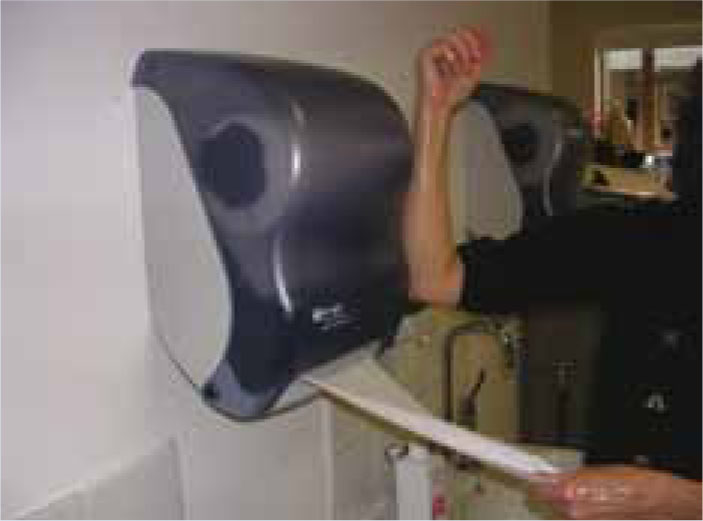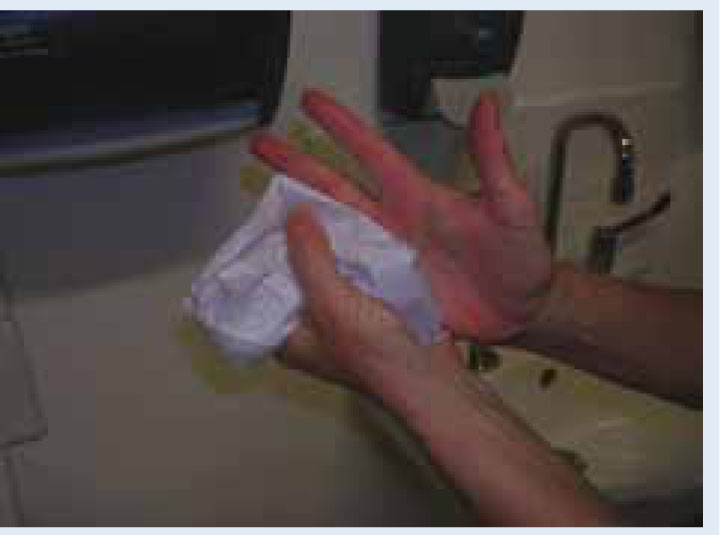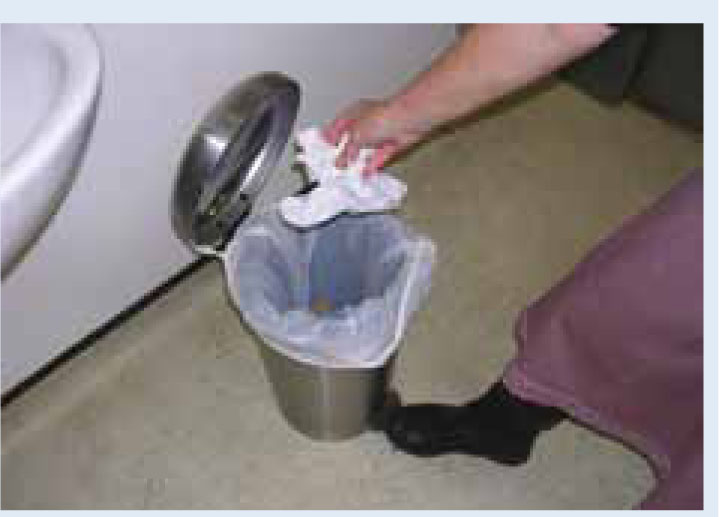The environment has an abundance of microscopic life and for most of the time these microbes cause little or no damage. In fact many such microrganisms are beneficial, such as resident skin microflo-ra (predominantly staphylococcal bacteria). These protect against invasion by pathogens (Gregory, 2005) including viruses, microscopic parasites, fungi and bacteria. In fact, some commensal microflora may be pathogenic to immune-compromised patients. All pathogens are a significant risk to patients’ health and one of the main causes of iatro-genic infections is lack of hand hygiene.
Effective hand hygiene is an essential component in the reduction of transmission of potentially pathogenic bacteria from person to person. There are a wealth of data linking it to, among other things, improvement in survival rate post surgery, reduction in perinatal mortality, and better attendance figures in schools (DaRo hand inspection systems, 2011). Unfortunately, good hygiene practice by one person can be counteracted because of poor practice by another. So, for example, cleaning hands after visiting a public toilet, then touching a contaminated exit door, negates good practice. In fact it may leave the ‘clean’ person in ignorance of the possible transfer risk, by giving them the false assumption that their hands are sufficiently clean.
Hand-to-mouth contamination is the most obvious and immediate means of transmission of pathogenic material. So, attention to personal cleanliness, together with hand washing before eating and avoiding habits such as nail biting, are to be encouraged from a very young age to consolidate good practice as adults.
One aspect of hand hygiene that is important not to overlook is thoroughly washing fingertips and under nails. This is because these areas are heavily utilized when it comes to intricate digital manipulation (such as use of computer keyboards, mobile phones, applying cosmetics or contact lenses, scratching an itch) and it is immediately obvious that they can also be an easy source of cross-contamination (Taylor, 1978).
The veterinary clinic
Portner and Johnson (2010) highlight that there is a substantial amount of information and recommendations regarding incidence and control of nosocomial (hospital-acquired) infections in the human hospital setting, but rather fewer in the veterinary clinic/ hospital setting. The implications for animals can have a very profound effect largely because of costs involved in treatment, and as a result owners may opt for euthanasia of their pets. In many situations the procedures and protocols in clinical treatment of humans and animals are the same or very similar, and that of course includes hand hygiene. It is worth remembering that veterinary patients are more likely to have greater contamination on their body surfaces than most human patients (Traub-Dargatz et al, 2006). This is for a number of obvious reasons, such as they are not bathed regularly, are haired over most of their body and, certainly for large animals, are in close proximity to their excreta. Weese's detailed paper on barrier precautions and personal hygiene (2004) states that of all the measures that can be employed to reduce both nosocomial and zoonotic infection, hand hygiene was perhaps the most important.
The science of cleaning with water
Water is the obvious first-choice cleaning fluid because of its excellent solvent properties. Flushing away visible physical dirt/ debris by using free-flowing water rather than contained water (think of shower versus bath) is obviously more hygienic. However, it is generally recognized that water alone is ineffective in removing oily or organic soiling. Plain soap (with water) cleans by acting as an emulsifier, allowing the oil and water to mix. This emulsion, or lather, (which is likely to contain loose transient skin flora held in the oily skin secretions) can then be removed by rinsing. Detergents have surfactant properties which lower the naturally high surface tension of water, so it is less likely to adhere to itself and more interactive with oil and grease. Both soap and detergent action are facilitated by warm water which melts fats and oils and both involve the mechanical removal of microbes rather than chemical inactiva-tion. Medicated or antiseptic cleansing products act additionally by chemical inactivation or inhibiting growth of micro-organisms.
Where hands are very regularly washed due to the nature of a job (medical, veterinary, food preparation etc), then very hot water should be avoided as this may lead to some degree of skin damage and subsequent dermatitis as protective skin lipids and epidermal layers are more effectively sloughed of as water temperature increases (Smith, 2008). In addition regular washing requires regular and thorough hand drying in order to protect the hands from facilitated invasion by colonizing bacteria. Moisturizing creams can be applied daily (from a sealed squeeze- or pump-operated bottle to avoid bacterial contamination of the product) which will help to protect the skin and replenish lost oils, thus maintaining hands in a healthy state. Application should be ideally at least once a day, perhaps last thing at night.
The importance of drying hands properly
The best intentions and adherence to hygiene will benefit the individual, but at group/community level, compliance has to be observed by everyone in order to maintain standards of cleanliness and disease control (Pittet et al, 2003; Venkatesh et al, 2008). Contaminated hands washed only briefly and left damp can spread bacteria and viruses more effectively than dry contaminated hands. This is because such pathogens survive longer in damp conditions and will adhere more easily to other surfaces (Pittet et al, 2006).
Thus good hand drying technique and drying facilities are almost as important as hand washing procedure. It is intuitive that reusable cloth towels will potentially facilitate harbouring and spread of transient pathogenic microbes. Disposable paper towels are an improvement; however, the benefit is likely to be offset if the dispensing lever is hand-operated rather than elbow-operated where personnel are not fully compliant with good hand cleaning procedure (personal observation). Nowadays, elbow-dispensed disposable paper towels used together with a foot-operated bin is considered the best option for everyday practice (Gregory, 2005).
Warm air hand dryers were until recently considered good practice, but often they have weak air-flow, and hands may be left damp when the flow switches of. Pathogens may also collect around the source of the air flow. A state-of-the-art hand dryer, the Airblade (Dyson Ltd, Malmesbury, UK) is, in contrast, a highly effective ‘hands-down’ system. This is due to the design of the powerful ultra-rapid air-flow vents which dry the hands more quickly and thoroughly than traditional dryers (Snelling et al, 2011).
What other cleaning fluids are effective?
If hands are visibly clean (or have recently been washed and dried), then research has shown that high alcohol concentration (60–80%) cleansers are more effective at decontamination than plain or medicated soaps and water (World Health Organisation, 2009). Antiseptic gels do not mechanically remove micro-organisms but they have effective antiseptic properties. In one study, Kac et al (2005) assigned healthcare workers to perform hand cleaning for 25–30 seconds with either unmedicated soap and water or an alcohol-based solution (Sterillium™, containing 75% alcohol (Bode-Chemie, Hamburg, Germany)); after using the alcohol rub, no transient flora were recovered following testing by agar plate culture. One of the advantages of such rubs over water is rapid evaporation thus negating the use of frictional drying materials. There is also evidence of fewer dermatological problems in the form of allergies, eczema, etc, when alcohol rubs are used in place of chlorhexidine or iodine-based products. This evidential reduction in dermatological infections has shown that there can be increased compliance by medical staff (Parienti et al, 2002), especially when there is a lack of hand washing facilities.
How important is education in hand hygiene?
In the National Health Service, one of the priorities in trying to reduce nosocomial infections is emphasizing the importance of basic procedures, including hand-washing (Stone, 2001). Rosenthal et al (2005) found that an educational approach together with frequent performance feedback improved compliance with hand hygiene and reduced nosocomial infection rates.
In a clinical setting, hand hygiene measures must be carried out before and after handling a patient. But in general terms, any activity resulting in exposure to potential pathogens means hands should be washed (e.g. after touching a wound).
Conclusion
Effective hand hygiene includes not only taking enough time to wash and dry hands but also remembering to pay attention to individual parts of the hands such as thumbs and fingertips. For those in the medical and veterinary professions regular washing of hands in between patient handling and care can help to measurably reduce cross infection and contain disease. Prioritizing a holistic educational approach across all spheres from schools to medical establishments would help promote compliance in respect of this simple procedure. The Royal Veterinary College implements its own protocol by assessing its veterinary and nursing students on their effective hand washing technique via Objective Structured Practical Veterinary Examinations (OSCEs).
Indeed the World Health Organisation (WHO) notes that the ‘antibacterial effi-cacy of handrub products containing high concentrations of alcohol by far surpasses that of any medicated soap presently available, and in addition the initial reduction of resident skin flora is rapid and efective’. It is worth noting at this point that there is also a waterless surgical scrub technique recommended by the WHO. So the future may well be use of alcohol rubs partially or fully replacing soaps-plus-water as the cleanser of choice.

